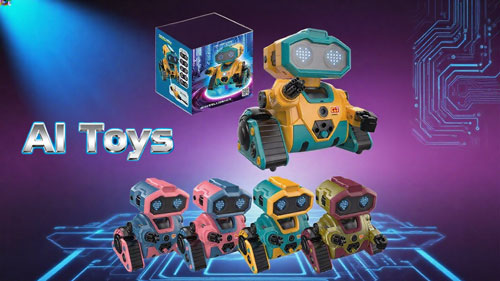The global toy industry is undergoing a radical transformation, driven by artificial intelligence technologies that are creating more interactive, educational, and engaging play experiences. From AI-powered companions to educational toys that adapt to individual learning styles, the integration of machine learning and natural language processing is redefining what toys can do.
The AI Toy Market Boom
The AI toy market has experienced explosive growth in recent years. According to industry data, AI toy product sales increased sixfold in the first half of 2025

compared to the previous year, with year-over-year growth exceeding 200%. This surge reflects both technological advancements and growing consumer acceptance of AI-powered products.
What began with simple voice-activated toys has evolved into sophisticated play companions capable of natural conversations, emotional recognition, and adaptive learning. Today's AI toys aren't just entertaining children; they're becoming valuable tools for development and education.
Multimodal AI: The Technology Behind Modern Toys
The most significant advancement in AI toys comes from multimodal AI systems that can process and integrate multiple types of inputs simultaneously – including text, audio, visual data, and even tactile feedback. This allows for more natural and engaging interactions that closely resemble human play patterns.
- Modern AI toys incorporate technologies such as:
- Natural language processing for realistic conversations
- Computer vision for recognizing objects and people
- Emotion detection through facial expression and voice tone analysis
- Adaptive learning algorithms that personalize content
- Augmented reality features that blend physical and digital play
Enhanced Interaction Through Emotional Intelligence
The latest generation of AI toys goes beyond simple question-and-answer functionality. Companies are implementing sophisticated emotion simulation systems based on studies of real animal and human behavior. These systems enable toys to develop fluctuating moods that respond to how children interact with them.
For example, researchers have developed systems that can make existing robot pets seem more "alive" by projecting virtual facial expressions, lights, sounds, and thought bubbles through augmented reality interfaces. These enhancements allow even basic robotic toys to provide experiences much closer to those offered by real animal companions.
Educational Value and Personalized Learning
AI-powered educational toys are revolutionizing how children learn. The integration of AI technology provides toys with "interaction, companionship, and education" capabilities, making them valuable learning tools that extend beyond traditional play 1. These smart toys can adapt to individual learning styles, identify knowledge gaps, and provide personalized content that challenges children at appropriate levels.
Language learning toys can now conduct natural conversations in multiple languages, while STEM-focused toys can explain complex concepts through interactive play. The best AI educational toys combine engagement with measurable learning outcomes, giving parents valuable insights into their child's development.
Sustainability Through Digital Enhancement
An interesting development in the AI toy space is the focus on sustainability. Rather than discarding older toy models, new technologies allow for digital enhancement of existing toys through augmented reality systems. Researchers have developed software that can overlay new virtual behaviors on commercially available robot pets, effectively breathing new life into outdated products without physical modifications.
This approach addresses the environmental concerns associated with electronic waste from discarded smart toys. By extending the functional lifespan of toys through software updates and AR enhancements, manufacturers can reduce their environmental impact while providing ongoing value to consumers.
Case Study: AZRA - Augmenting Existing Toys
A research team from Scottish universities has developed an innovative augmented reality system called AZRA (Augmenting Zoomorphic Robotics with Affect) that demonstrates the potential of AI to enhance existing toys. The system uses AR devices like Meta's Quest headset to project virtual expressions, lights, sounds, and thought bubbles onto existing robot pets and toys.
AZRA incorporates eye contact detection, spatial awareness, and touch detection, allowing enhanced toys to know when they're being looked at and respond appropriately to physical interactions. The system can even make toys protest when stroked against their preferred direction or request attention when ignored for extended periods.
The Future of AI in Toys
The future of AI in the toy industry points toward even more personalized and adaptive play experiences. We're moving toward toys that form longer-term relationships with children, learning their preferences, adapting to their emotional states, and growing with them over time.
As these technologies become more affordable and widespread, we can expect AI capabilities to appear in more traditional toy formats at various price points. The challenge for manufacturers will be balancing technological innovation with safety, privacy, and developmental appropriateness while maintaining the simple joy of play that has always defined great toys.
About Our Company: We are at the forefront of integrating AI technology into educational and entertainment products for children. Our team of developers, child psychologists, and educators work together to create toys that are not just technologically advanced but also developmentally appropriate and engaging for young minds.
For more information about our AI-powered products, visit our website or contact our team for a demonstration.
Contact Person: David
Tel: 13118683999
Email: wangcx28@21cn.com /info@yo-yo.net.cn
WhatsApp:13118683999
Post time: Aug-22-2025



